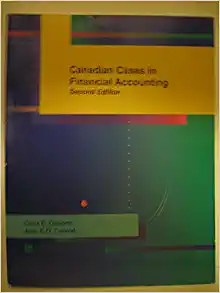Please answer the following questions, Thanks!
Q1
Instructions: Designate the best answer for each of the following questions. 1. Decker Corporation purchased 500 common shares of Kent Company at $70 per share plus $1.500 brokerage fees as a temporary investment. The shares were subse-quently sold at $80 per share less $1.700 brokerage fees. The cost of the securities purchased and gain or loss on the sale were Qost gain Qr LQ $35,000 $5,000 gain $35,000 $1,800 gain $36,500 $1,800 loss $36,500 $1,800 gain P-PP'P' 2. At the end of its first year, an investment portfolio consisted of the following common shares: _C'&$_t MarRel Aikman Corporation $23,200 $25,000 Irvin Inc. $30,000 $26,900 Young Corporation $40,000 $38,000 The loss to be recognized under the lower of cost and market value method is a. $3,100. b. $5,100. c. $3.300. d $2,000. 3. In the following year, the Irvin common shares in question 2 are sold for cash proceeds of $29,000. The gain or loss to be recognized on the sale is a a. gain of $2,100. b. loss of $1 .000. c. gain of $1,100. d. loss of $200. 4. Rhome Corp. issued $300,000 of 8%, 5-year bonds at 102 on January 1, 2001. The straight-line method of amortization is used and the bonds pay interest annually on January 1. The amount of bond interest expense that Rhome should report on its 2001 income statement is a. $24,000. b. $24,480. 0. $22,800. d. $25,200. 5. Todd Corporation issues long-tenn bonds at a discount. Amortization of the discount will a. decrease bond interest expense. b. increase bond interest expense. 0. decrease the canying value of the bonds on the balance sheet. d. be reported as a loss on the income statement. 6. Under the equity method of accounting, the equity investment is initially recorded at cost and the investment account is subsequently a. credited for cash dividends received. b. debited for the investor's share of investee net income. 0. debited for cash dividends received and credited for the investor's share of investee net income. d. both a and b. 7. The account Loss on Decline in Value of Investment is reported a. as a contra account in the shareholders' equity section of the balance sheet b. in the other expenses and losses section of the income statement. 0. in the operating section of the income statement. d. as a contra account in the current asset section of the balance sheet. 8. The cost method of accounting for long-tenn equity investments is typically used when the investor a. has a controlling interest. b. owns between 20% and 50% of the investee's common shares. 0. does not have significant inuence over the investee. d. recognizes any goodwill when preparing consolidated nancial statements. . Atkins Company purchased 40% of the common shares of Young Corp. on January 1, 2001. Young reported net income of $80,000 for 2001 and declared and paid cash dividends on common shares of $25,000. Atkins should report revenue from its investment in Young for 2001 of $ Kramer Inc. purchased 30% of the common shares of Walsh Industries on January 1, 2001 for $150,000. Walsh reported net income of $80,000 for 2001 and declared and paid cash dividends on common shares of $30,000. The amount of Kramer's investment in Walsh on December 31, 2001 should be . Gilkey Corporation purchased 3,000 common shares of Dole Company for $12 per share as a long-term temporary investment on June 30,2001. Dole declared and paid a cash dividend of $2 per common share on September 30, and had a closing market value of $18 per share on December 31. Assuming this investment is appropriately accounted for using the cost method, it will increase Gilkey's 2001 income before taxes by $ Ryan Company bought 35% of the common shares of Bender Inc. on January 1, 2001, for $400,000. Bender reported net income of $300,000 for 2001 and declared and paid no dividends for the year. This investment was sold for $600,000 on December 31, 2001. Ryan should report a gain on sale of this investment on its 2001 income statement of $ Morgan Inc. accounts for its investment in Tucker Corporation using the cost method. Morgan bought 3,000 (5%) of Tucker's common shares for $28 per share on January 1, 2001. Tucker earned $3 per share for 2001, declared and paid cash dividends of $1 per common share, and had a closing market value of $22 per share on December 31. The reported balance sheet value of Morgan's investment in Tucker at December 31, 2001 is $









